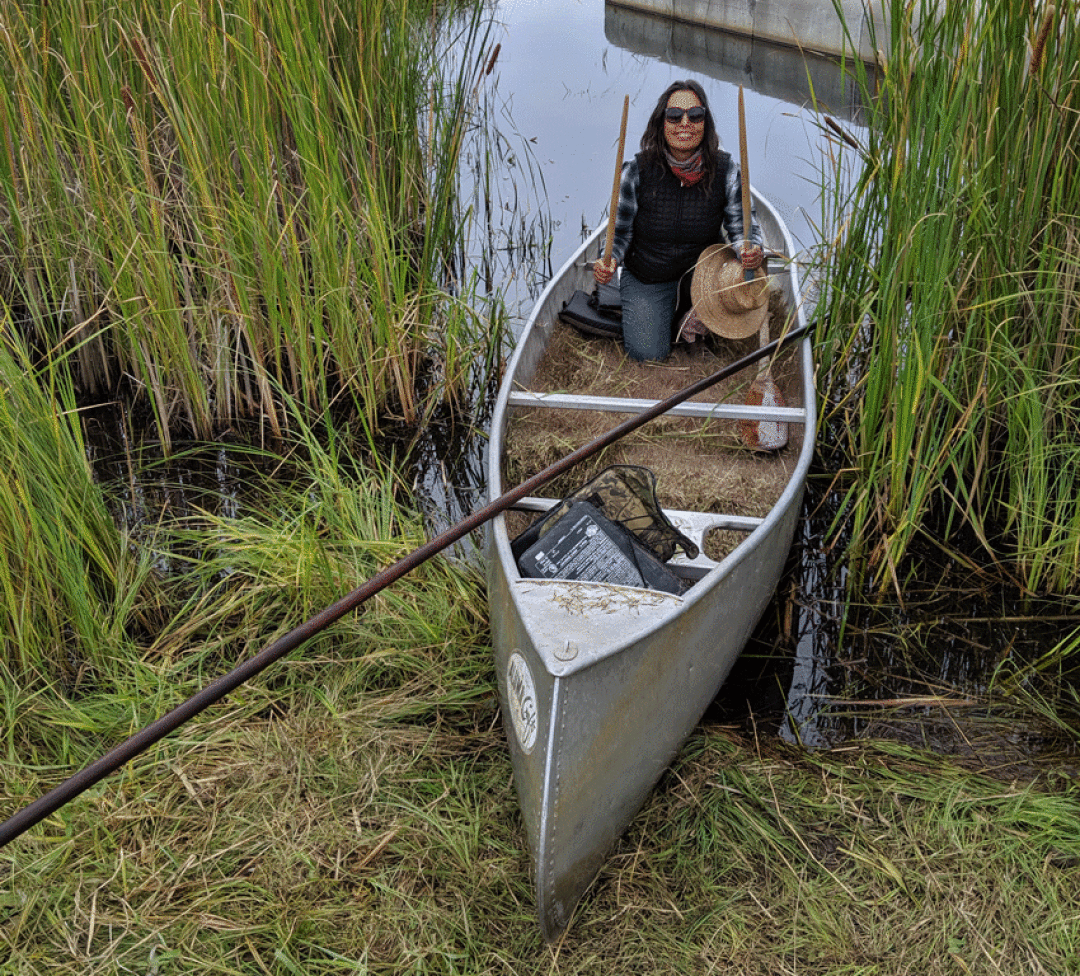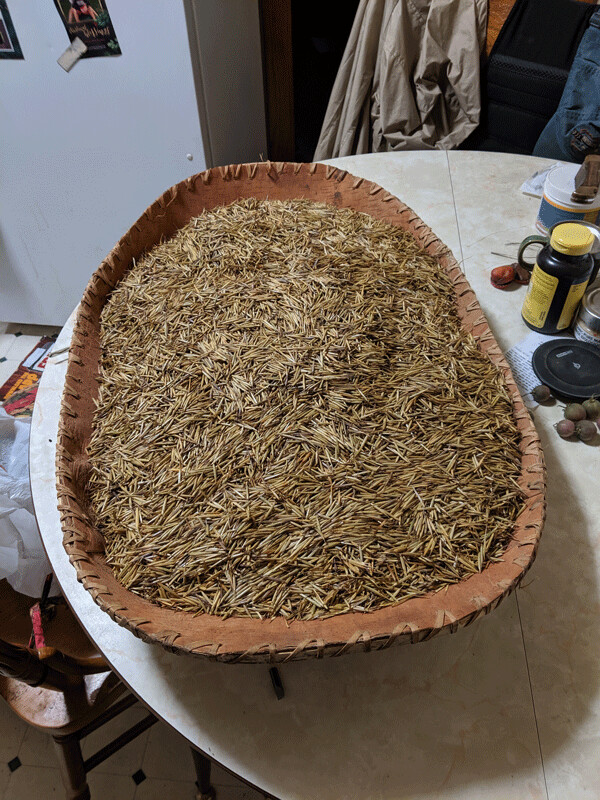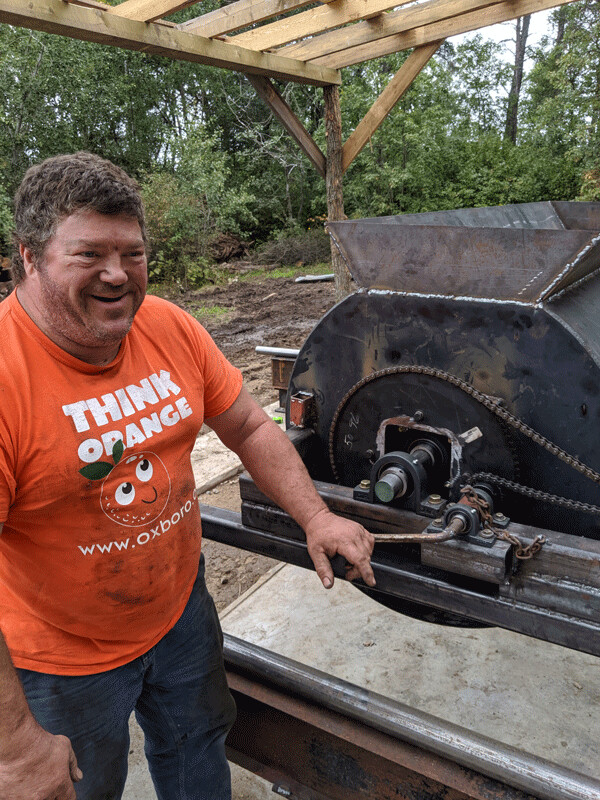The Magic of Parching

It is Manoominike Giizis, the Wild Rice Making Moon. For thousands of years, Native people have gone to these lakes, listened to the sounds of rice hens, geese, cranes, and swans fly overhead as we pole and knock through thousands of acres of manoomin. Manoomin, or wild rice, also feeds the bodies and spirits. This region is the only place in the world where wild rice grows. This rice is endemic from this place, and the wild rice ecosystem of Northern Minnesota, Ontario, Manitoba, Wisconsin and Michigan is full of what is, in Ojibwe, called the wonderous grain.
There is magic to this food. The kernels fall with baawaajiganookaag, or wild rice knockers and fill canoes, just as they did a thousand years ago. Those kernels wrapped in hulls are guarded by a prickly “rice beard”. Harvested manoomin then is set to dry. Long ago, minwenzha, the Anishinaabe parched wild rice with a clay pot. The trade item of cast iron kettles: (ten beaver pelts for a cast iron pot) brought the next parcher to the Anishinaabe. The giant black kettles were a good plan and should stay put. (Traditionally, the Anishinaabe traveled from harvest to harvest; maple syruping to fishing, and then to wild rice camps, finally hunting and winter camps… Think of it as a lake cabin, a hunting cabin, and the townhouse). The parched rice is danced upon (jigged) then winnowed. Voila, no rice hulls or beards. And then, it’s ready to eat

Over the centuries, the technology has changed, but continuity remains, representing a thousand years of a “sustainable economy”. Take care of your manoomin and it will care for you.
In the l950s, the advent of larger processing equipment came with local ingenuity. Parchers were fashioned from 55-gallon drums and rotated over a fire. “Thrashers” replaced jigging, adding mechanization, but losing the “new moccasins” dance to remove hulls. Walking inside the Wild Rice Parching Mills of White Earth for the past forty years, I’ve seen a lot of different equipment; a lot like that Johnny Cash Song, “One Piece at a Time”, ancient, and adapted equipment.
The equipment is specialized, locally engineered, adjusted for rice varieties and size. There’s nuance in biodiversity. That’s to say, the Shell Lake manoomin is different than the manoomin harvested from Lower Rice Lake; the Mother Lode of wild rice in this territory. River rice is different too. There is magic in parching, and those who parch are few in number.
This year, the White Earth reservation lost two great parchers, Russell Warren and Sunfish Oppegard, both renowned for tons of rice for the people of White Earth and beyond. Russell Warren lived on Nett Lake near White Earth; a Navy vet, he could make the best popped wild rice ever; always had a sparkle in his eye, too. His parching plant was a large white steel building, the most automated on the reservation. Sunfish parched rice for probably 30 or years, nestled on the shores of Roy Lake. They are sorely missed. May we feast their memories with good rice always.

This year, I returned to the Dewandler Rice Parching plant on the Ponsford Prairie. One generation ago, Louis DeWandler, Morris Stevens and Donavon Vizenor, parched rice together at the farm. Rice from Tamarac Wildlife Refuge often went to DeWandlers, and before that, Dave Annette’s Rice mill in Ponsford. Ketter’s (Frazee) also had some parching. Times change, people pass on, but the show must go on. Someone has to parch all that rice — hundreds of thousands of pounds which come off these lakes. These are artisan processers.
Rich DeWandler has been around wild rice processing at this dad’s mill since he was 9 years old; he’s 54 now. He remembers the old mill, the local people who would come in, and the equipment. All of it. He’s modified his father’s designs, from the parcher to the thrasher. “I took Kenny Lundberg’s thrasher and made the paddles metal,” his father’s thrasher; and with fans, made the whole place a lot less smoky and itchy. The fact is that parching wild rice is an itchy business. The whole wild rice world is itchy. Rich DeWandler is proud of his rice, and it shows. He shows me some extraordinarily long rice that may parch out at 50% or more. Mitchell Dam, in the middle of the Tamarac Wildlife Refuge, parched out at 42% the first week of September, he tells me. There will be more rice coming — tens of thousands of pounds of wild rice anticipated off these lakes and then off Lower Rice Lake. That’s a lot of wild rice, dust, people and life. That’s a lot of community pride and a unique food.
The DeWandler family has lived on the Ponsford Prairie, in the midst of the reservation for three generations. “I have a lot of Indian friends. And some of those Indian friends don’t like White People. And I have a lot of white friends, and some of them don’t like Indians,” he tells me, puzzled, by the irony. Richard has two grand children who are tribal members. It’s a small world, getting smaller. Seems like it’s time to get along. After all, we all drink the same water, and we all love wild rice. The unique manoomin is a gift which brings us together.
